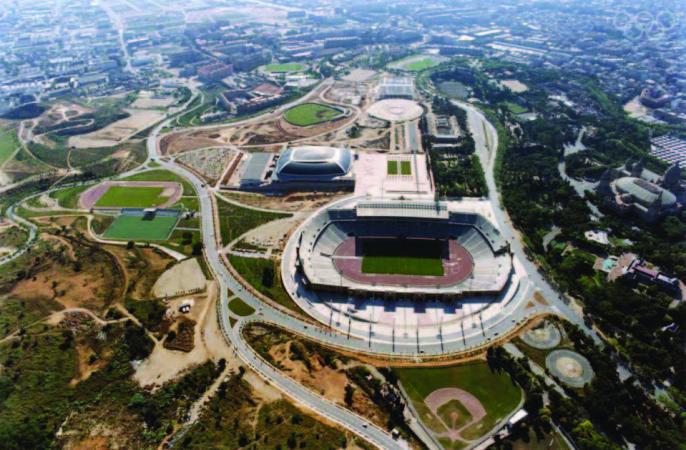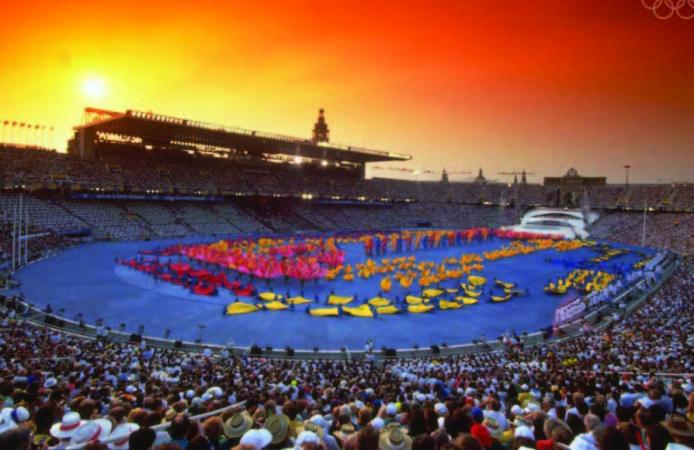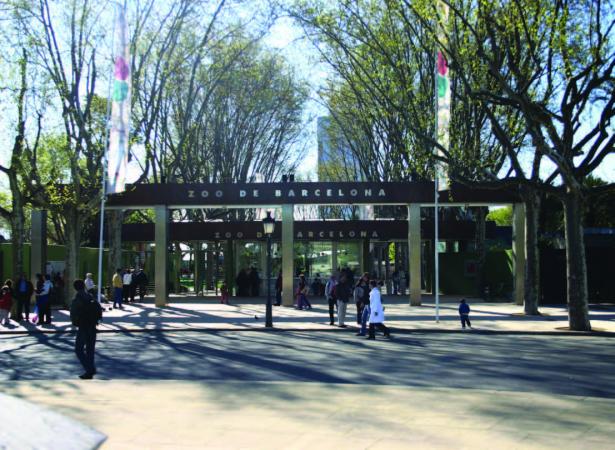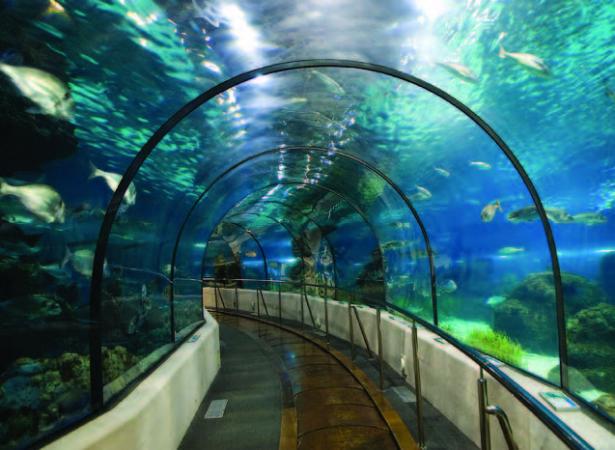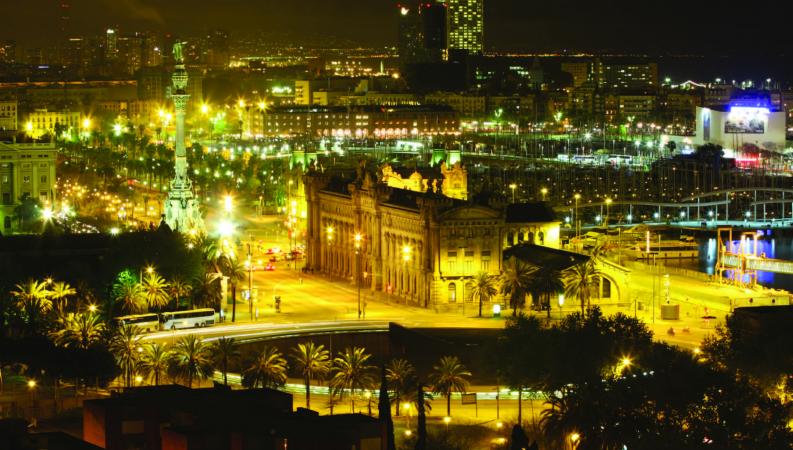In Barcelona, Malcolm Ginsberg marvels at how the 1992 Olympics rejuvenated the city.
By Malcolm Ginsberg
Barcelona is arguably the greatest port on the Mediterranean. And it is one of the easiest to get to, with high-speed trains from Madrid and air links from all over Europe, the US and Israel.
The rejuvenation of the city, which is capital of Catalonia, can be traced back to the 1992 Olympics, a huge infrastructure project that transformed a rundown metropolis into a vibrant conurbation. The long-term Olympic legacy being discussed in London is a reality in Barcelona.
Despite Barcelona’s historic importance, by the early 1980s it was in a pretty bad way, the result of lacking interest from Madrid and a change in the economic scene regarding its port facilities. All this changed when it won the Olympic bid, with new hotels, the reclaiming of beaches, advanced sports facilities both on water and on land,
and most important of all the rebuilding of what was to become the Olympic Stadium sitting more or less on the top of the Montjiuc Park.
Since that time a 21st century port has been built well away from the tourist areas, and the very modern cruise terminal is now the largest and busiest in Europe. Spain continues to sit on the edge of an economic precipice whilst Barcelona booms.
For the tourist Barcelona it has broad appeal: history, art, food and plenty of interest for children. You can stay in the most modern of hotels, or very simple bed and breakfast. Take the open top bus tour but also purchase a Barcelona card, which allows for queue jumping and includes free admission to the city’s foremost museums. The card also entitles you to a free waterfront cruise on Las Golondrinas and admission to the Circuit
de Catalunya motor racing track.
Barcelona is home to one of the world’s most famous soccer clubs, and to the architect Antoni Gaudí, whose unfinished cathedral La Sagrada Família, dominates the skyline. His fascinating 17-acre Park Güell is a must with or without children. Picasso was always associated with Barcelona and he helped to found the museum named after him, the only one opened in his lifetime. In total the Museu Picasso de Barcelona owns 3,000 works, and those on show are spread over five adjoining medieval palaces.
Within the old docks area, very much at the center of things, is Port Vell with its fine aquarium, IMAX theater, shops and restaurants. Nearby is the Maritime Museum, which is undergoing a major re-work. It was the Royal Shipyard and houses a remarkable reproduction of the royal galley of John of Austria, commonly known as the Real (meaning Royal).
The center of Barcelona is small enough to be considered walking territory, although of course it can get extremely hot, especially after lunch — when the Spanish traditionally go for siesta. However, for the most part the streets are narrow offering protection from the sun.
The Barcelona Zoo is based in the Parc de la Ciutadella. It has a wide variety of animals on show but the highlight is the three times per day Dolphin show included in the entry fee with two large seating areas. Do not worry that the commentary is only available in Catalan or Castellano, as it’s is the playful sea mammals that people come to see. The zoo also has a restaurant, picnic area, a shop, electric cars, ponies and a mini-train.
The Montjuïc area has a number of attractions including the Spanish Village with different quarters that replicate the style of houses and architecture from different parts of Spain. It plays host to a number specialist craft shops and workshops where you can see traditional goods being made and sold.
Barcelona’s ancient Jewish Quarter is close by La Rambla, the city’s most famous thoroughfare. Carrer del Call, Carrer de Sant Domènec del Call, Carrer Marlet, and Arc de Sant Ramón del Call mark the heart of the 7th to 14th century quarter, dramatically brought to an end in August 1391 with the massacre of 200 Jews. The Jewish community produced many leading physicians, economists, and scholars in medieval Barcelona. A plaque bearing Hebrew text on the corner of Carrer Marlet and Arc de Sant Ramón del Call was the only physical reminder of the Jewish presence here until the reopening of the medieval synagogue in 2003 as a museum.
In terms of its Jewish life, Barcelona today is thriving and vibrant with about 5,000 Jews. There are active Sephardi, Lubavitch and Liberal congregations, a school, kosher restaurants, plus various delicatessens and grocery stores selling kosher items including one of the largest supermarkets. The Barcelona Jewish Film Festival has been running since 1999.
One of the most amazing Jewish stories of all is that of the Sinagoga (Synagogue) Major. In 1987, the Barcelona-born historian Jaume Riera y Sans began researching its location. His research was based on a reconstruction of the route followed by a thirteenth-century tax collector. He discovered a basement that was clearly a one-time synagogue, in an area known as The Call, the ancient Jewish quarter and just off La Rambla and by Plaça Sant
Jaume (Government Square).
In 1996 the newly formed Call Association of Barcelona, a multi-faith organization whose objective was, and is, the archaeological survey and restoration of the site, acquired the basement. It opened to the public in 2002, and became a museum that is well worth visiting.
The venue tells a story that would have the perpetrators of the expulsion spinning in their graves — the story of Jewish life in Spain functioning well in a free environment. A decade ago, in the first major Jewish ceremony in the synagogue in the five decades since the expulsion, a Jewish couple married there, and now it is open for weddings and other celebrations.
Barcelona has an efficient transport infrastructure. The hop-on open top bus tour is a good way to explore the city. It has a choice of three routes and operating at ten-minute intervals during the busy periods.
The blue route runs to the north and takes in La Sagrada Familia, Park Güell and Barcelona Football Club, while the red route concentrates on the massive Montjiuc park which overlooks the city, the Olympic Stadium and the old port area. The routes come together at the Placa de Catalunya where there are walking tours for the more energetic. The green route starts at the Olympic yachting centre, to the west of the city and passes a whole series of popular beaches before reaching The Forum, an auditorium and exhibition centre.
You can also see Barcelona via one of the two cable cars on Montjuic, supplemented by a funicular railway, or by an inexpensive metro system.
Malcolm Ginsberg is an award-winning Londonbased journalist. He can be contacted via malcolm.ginsberg@btnews.co.uk
